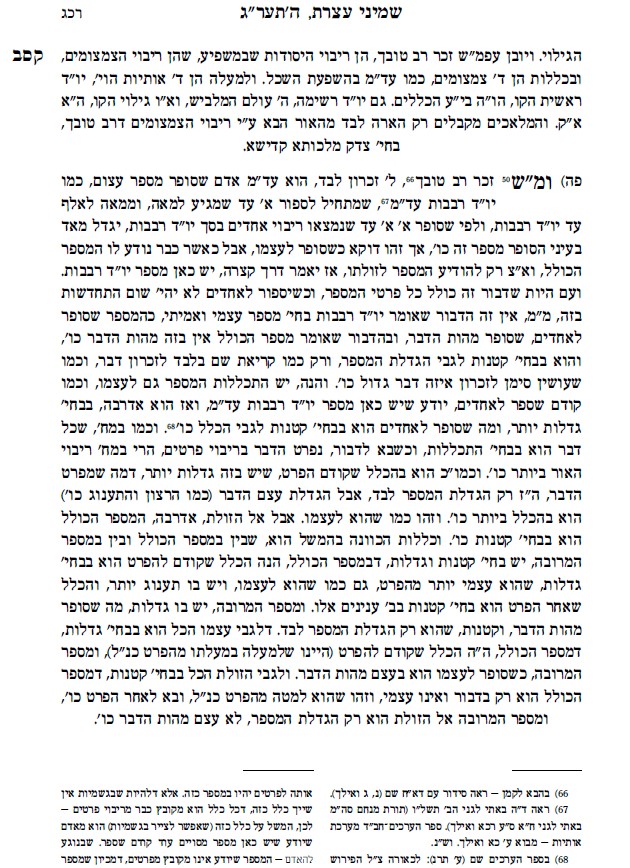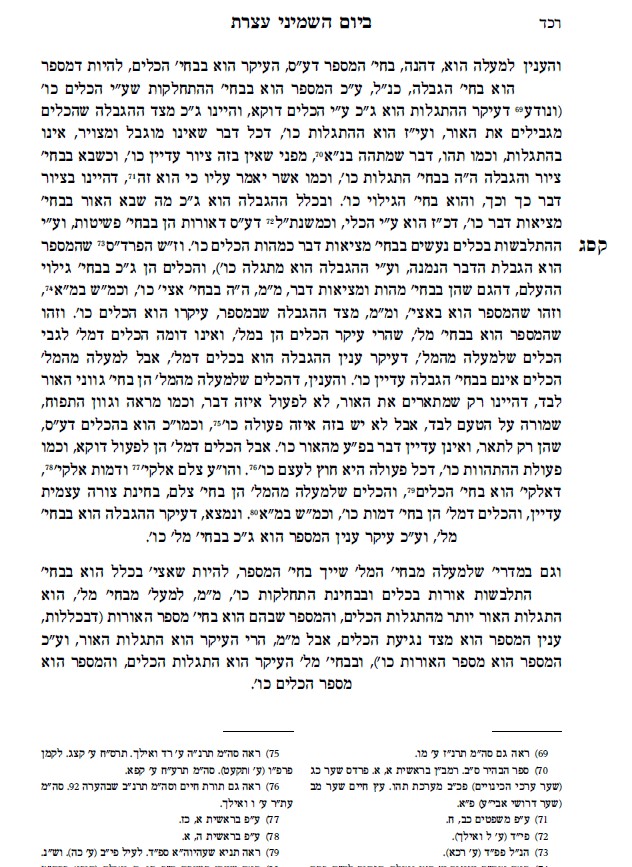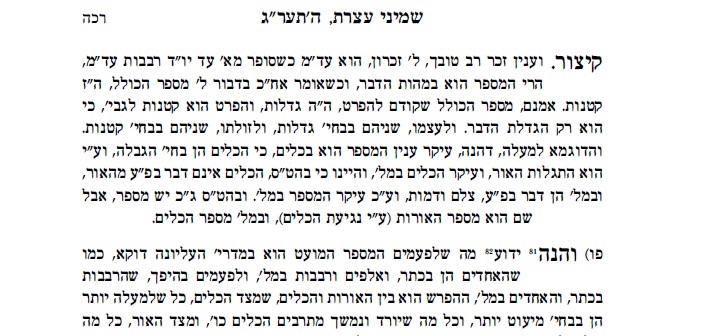AYIN BEIS | Existence Unplugged
Chapter 85: Anatomy of a Number
Long Summary
We will understand “zecher” — a reflection of all the levels (rav tuvcho) — with the example of a person counting an enormous number, say the number 10,000 (10 times revovah): As he counts one by one, first reaching one hundred, than a thousand, anf finally all 10,000, he comes to appreciate the magnitude and quality (mispar atzmi v’amiti) of the number. Afterwards, when he sums it up and describes it to another in a brief total of “10,000,” this number is only a symbol — a zecher — of the magintude, but does not capture its essential power as when he actually counted it unit by unit. The number (mispar ha’kolel) is a state of diminishment (katnus) compared to the magnitude (gadlus) experienced in the detailed counting (mispar ha’merubah).
To break it down further: The collective number (mispar ha’kolel) also exists by the counter, when for example he knows the number before he begins to count. This total (klal) precedes and is qualitatively higher (gadlus) than the actual detailed counting (prat), which only reveals the number (but does not add any new quality). Like the qualitative superiority of thought, where all the details are in an elevated state, compared to speech, which diminishes and breaks the ideas down into details.
The point of this example is to demonstrate that there is magnitude (gadlus) and reduction (katnus) in both the collective number and the detailed number: From the perspective of the counter himself, both the collective number (the klal that precedes the prat) and the detailed number express the magnitude of the number – the collective number captures the quality of the entity; the detailed numbers are counting the essence of the entity. But from the perspective of the outsider who is being told the number, both the collective number and the detailed number reflect a diminished and reduced state.
This example helps us understand how things are above: Number signifies parameters, which are determined primarily by the containers, which limits and defines the energy flow and thus reveals it (anything that is not defined is not revealed). The containers of atzilus reveal the hidden divine number (structure) in the energies. In atzilus itself the primary containers are in malchus: The containers of the nine higher sefiros are one with the energy; they only reveal the nature of the energy, like the colors of light. In malchus the containers take on a function that effects the lower levels. Thus malchus is the primary level which reveals the finite number of the higher sefirot, like the Pardes explains. Number in the nine higher sefirot is primarily the number of energies (these numbers also come because they are “touched,” effected, by the containers, yet the primary revelation is of energy not container); number in malchus is primarily the number of containers.
Hebrew Text




 Anchor
Anchor Breaker
Breaker Google Podcasts
Google Podcasts RadioPublic
RadioPublic Spotify
Spotify Pocket Casts
Pocket Casts